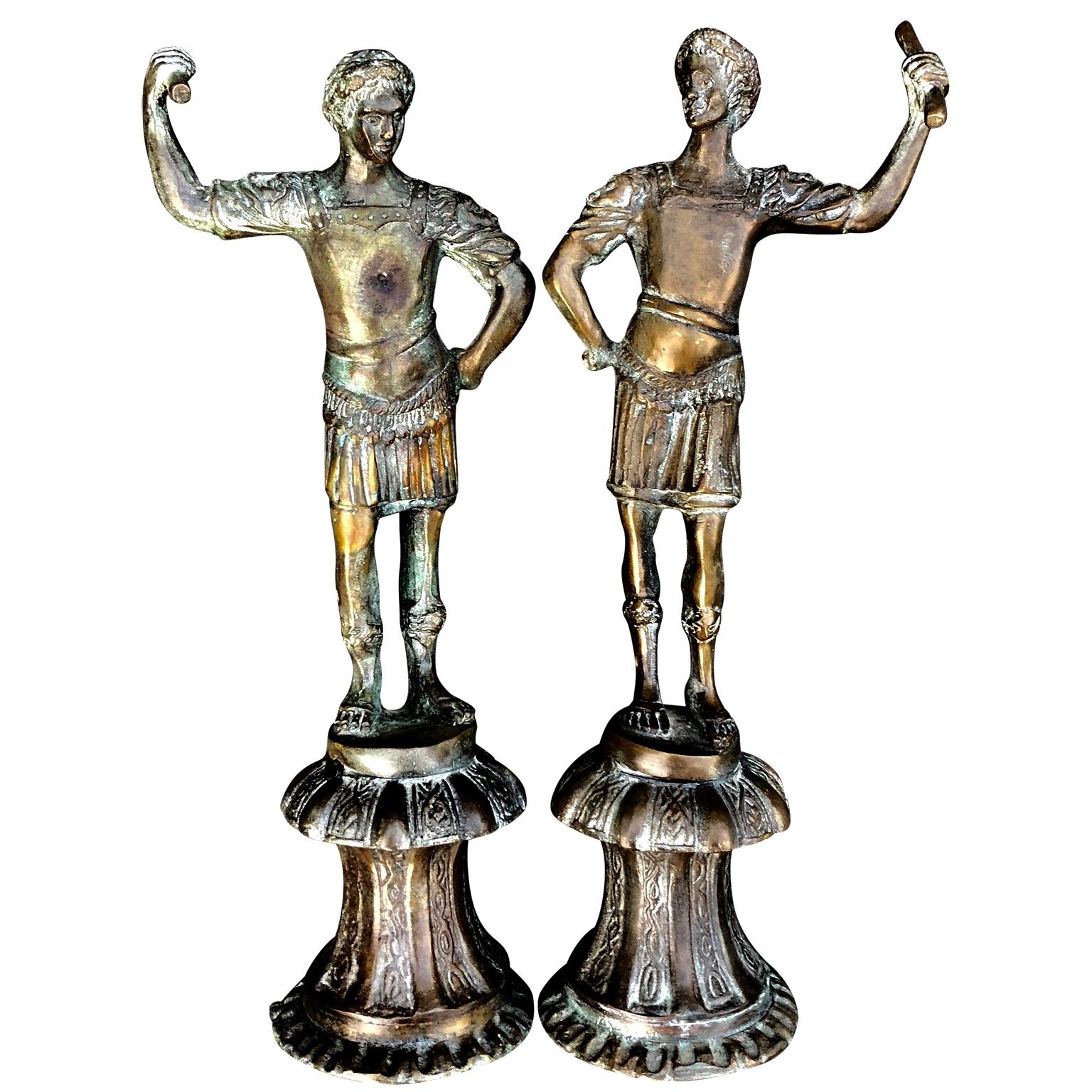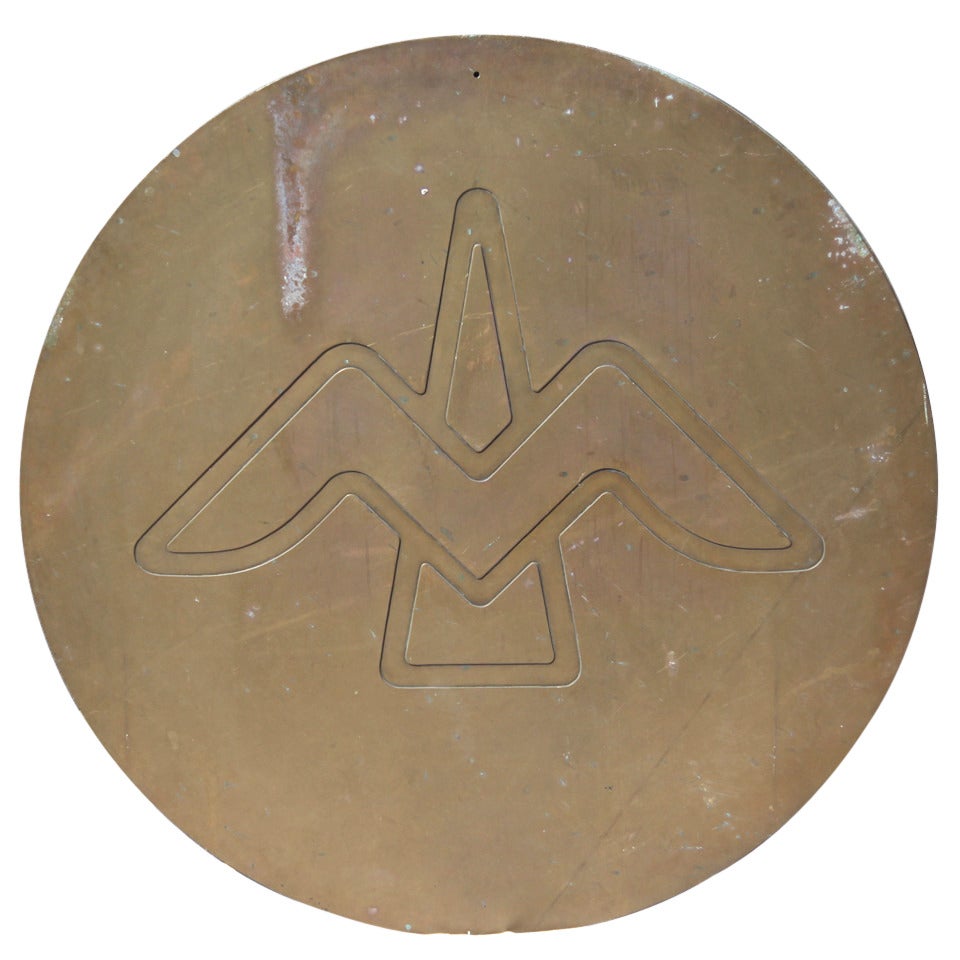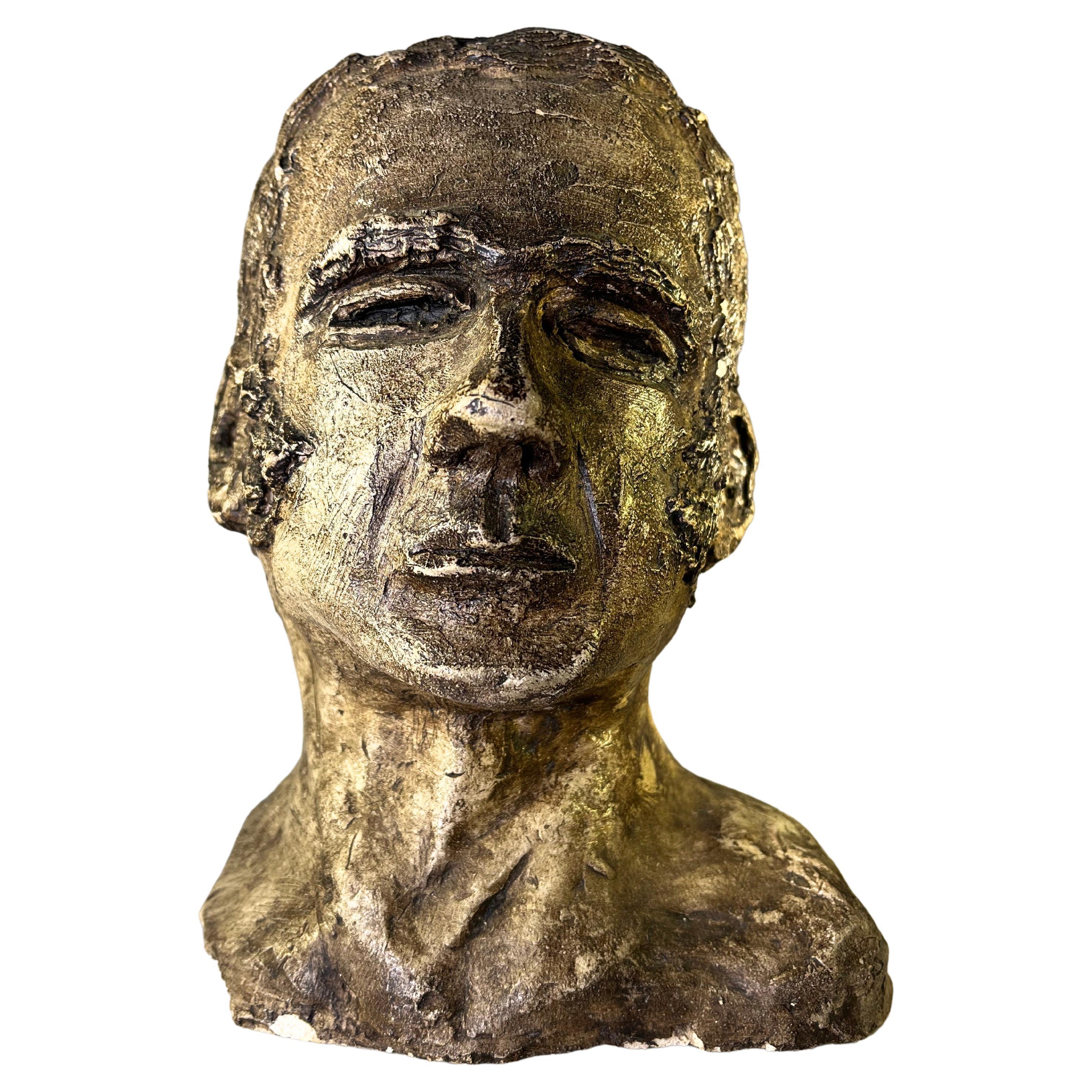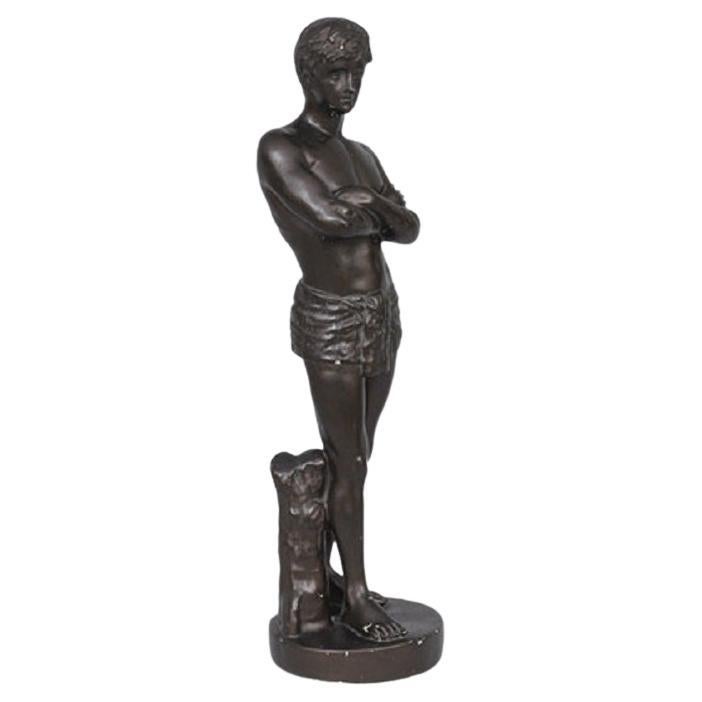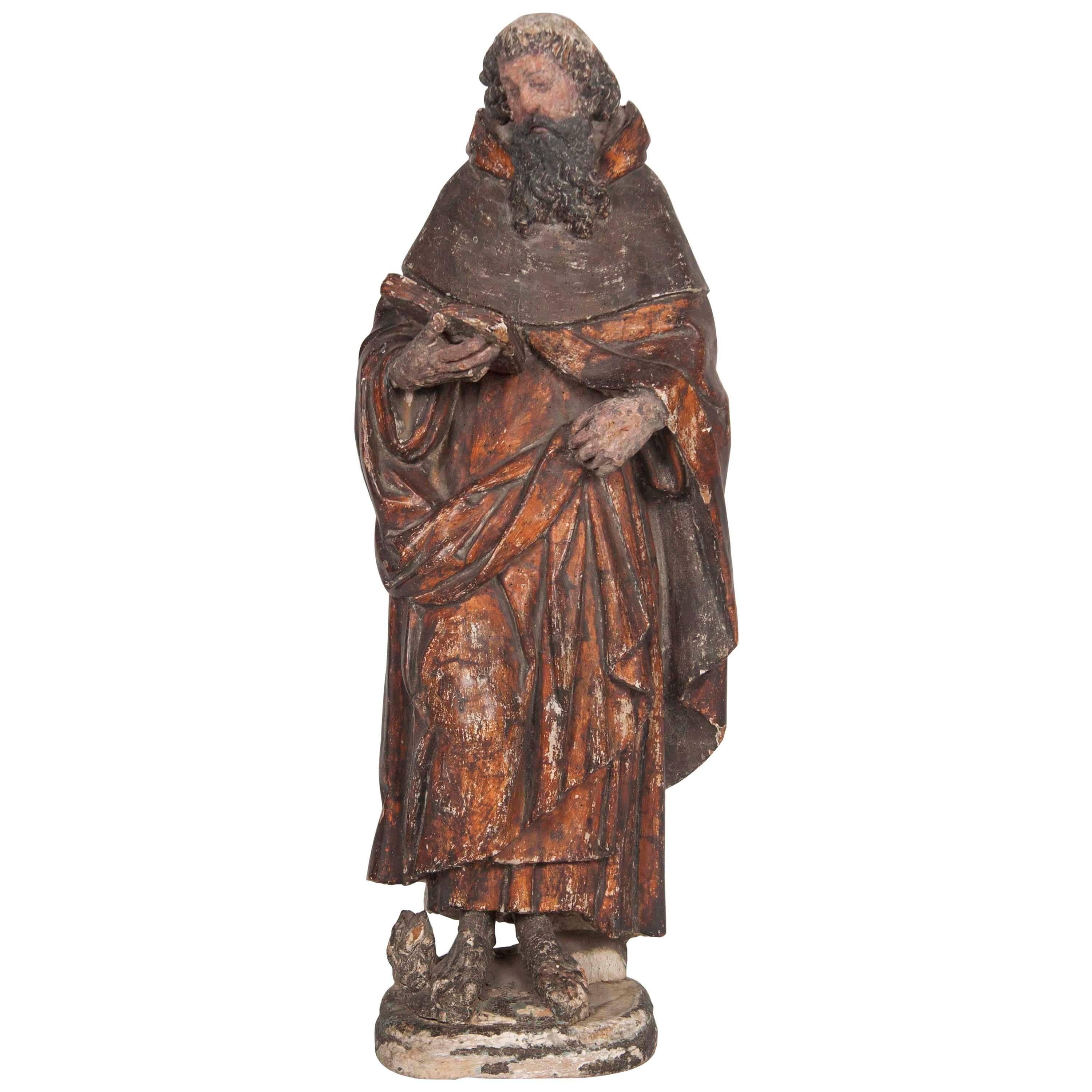Items Similar to Nude Male Bronze Sculpture Fountain
Want more images or videos?
Request additional images or videos from the seller
1 of 14
Nude Male Bronze Sculpture Fountain
About the Item
Bronze male sculpture signed. Fonderia Giorgio Sommer Calabritto Napoli
Thomas, sculptor, lived and worked in the Naples area, and especially on Capri, from 1889 to 1906. Given this example, it was apparently both made and cast there by 'Fonderia Sommer', which was established in Naples in 1885 by the German-born Giorgio Sommer (1834–1914). He went to Italy in 1857 and settled in Naples for the rest of his life where he ran, above all, a very successful business as a photographer, especially of classical sites, antiquities etc.
- Dimensions:Height: 22 in (55.88 cm)Width: 14.25 in (36.2 cm)Depth: 11 in (27.94 cm)
- Style:Renaissance (In the Style Of)
- Materials and Techniques:
- Place of Origin:
- Period:
- Date of Manufacture:Unknown
- Condition:Wear consistent with age and use. Perfect condition.
- Seller Location:Malibu, CA
- Reference Number:1stDibs: LU6005229970032
About the Seller
4.4
Gold Seller
These expertly vetted sellers are highly rated and consistently exceed customer expectations.
Established in 2010
1stDibs seller since 2021
156 sales on 1stDibs
Typical response time: 1 hour
- ShippingRetrieving quote...Ships From: Malibu, CA
- Return PolicyA return for this item may be initiated within 3 days of delivery.
Auctions on 1stDibs
Our timed auctions are an opportunity to bid on extraordinary design. We do not charge a Buyer's Premium and shipping is facilitated by 1stDibs and/or the seller. Plus, all auction purchases are covered by our comprehensive Buyer Protection. Learn More
More From This SellerView All
- Brutalist Chain Link SculptureLocated in Malibu, CAAntique chain sculpture that defies gravity. The term brutalism — which derives from the French word brut, meaning “raw” — was coined to describe a style and trend that emerged in th...Category
Vintage 1960s Brutalist Architectural Elements
MaterialsIron
- Antique French Bronze Decorative Fireplace AndironsLocated in Malibu, CA19th C Bronze fireplace decor with acanthus leaves urn.Category
Antique Mid-19th Century French French Provincial Fireplaces and Mantels
MaterialsBronze
- "Starstruck' Erte Bronze Art Deco Statue, signedLocated in Malibu, CAErte's "Starstruck". Art Deco bronze statue. This is a Limited Edition 320/375 She stands 22" High and is approximately 6.5" wide at the base and stars. She has been boxed for ages. ...Category
20th Century Art Deco Figurative Sculptures
MaterialsBronze
- Virginia Metalcrafters Cast Brass Tobacco Leaf TrayLocated in Malibu, CAVTG 1963 Virginia Metalcrafters Solid Cast Brass Tobacco Leaf Trinket Dish Perfect for holding small items like jewelry or coins, this dish is truly a one-of-a-kind piece. Whether y...Category
Vintage 1960s American Mid-Century Modern Natural Specimens
MaterialsBrass
- Designer's Jewelry MannequinLocated in Malibu, CADesigner's jewelry mannequin wrapped in Belgian linen over hardwood. Interior mechanism to place on a stand.Category
20th Century Belgian American Classical Figurative Sculptures
MaterialsLinen, Maple
- Early 20th C Neoclassical Bisque Roman/Greek FigurineLocated in Malibu, CAEarly 20th C Neoclassical Parian porcelain bisque cast Roman/Greek Figurine Neoclassical figurine of a draped Roman or Greek male.Category
20th Century European Neoclassical Figurative Sculptures
MaterialsPorcelain
You May Also Like
- Large Patinated Bronze Fountain with Heron SculpturesLocated in London, GBThis wonderful patinated bronze work is designed to function as both a water fountain and a superb piece of sculpture. The item will be well-suited to either an indoor or outdoor setting. The piece takes the form of two herons...Category
20th Century French Anglo-Japanese Fountains
MaterialsBronze
- Architectural Ceramic Water Fountains Sculptures Bronze Glazed 1960 MobachBy MobachLocated in London, GBThe sculptural head shaped water features hand-turned in ceramic, produced by Mobach in Utrecht during the 1960's. Mobach produced this unique mat bronze lustre glaze has a result of...Category
Vintage 1960s European Mid-Century Modern Abstract Sculptures
MaterialsCeramic
- Art Nouveau Bronze Sculptural Tray Indoor Fountain with Nude by Suzanne BizardBy Susanne BizardLocated in Antwerp, BEArt Nouveau bronze sculptural tray indoor fountain with seated nude holding a vase signed by Suzanne Bizard. Patinated bronze on impressive marble tr...Category
Antique Early 1900s French Art Nouveau Figurative Sculptures
MaterialsMarble, Bronze
- Italian Ancient Marble Sculpture Fountain, Late 16th CenturyLocated in Milano, ITSea monster Carrara marble mouth fountain Italy, late 16th century It measures 13.8 x 31.5 x 18.9 in (35 x 80 x 48 cm) State of conservation: some small evident gaps and widespread signs of wear due to outdoor exposure. The gray marks crossing it do not come from restoration, but are rather the natural veins of the marble. This work has some morphological characteristics typically associated with the iconography of the sea monster: an elongated muzzle, sharp teeth, protruding eyes, elongated ears, and a coiled serpent's tail. An in-depth series of studies on artistic depictions of the sea monster attempted to verify how this symbol evolved in antiquity in the European and Mediterranean contexts and how it gradually changed its image and function over time. The iconography itself is mutable and imaginative and its history is rich with cultural and artistic exchange, as well as the overlapping of ideas. This occurred so much that it is difficult to accurately pinpoint the "types" that satisfactorily represent its various developments. However, we can try to summarize the main figures, starting from the biblical Leviathan and the marine creature that swallowed Jonah (in the Christian version, this figure was to become a whale or a "big fish", the “ketos mega”, translation of the Hebrew “dag gadol”). Other specimens ranged from the dragons mentioned in the Iliad (which were winged and had legs) to "ketos” (also from Greek mythology), the terrifying being from whose Latinized name (“cetus”) derives the word "cetacean". See J. Boardman, “Very Like a Whale” - Classical Sea Monsters, in Monsters and Demons in the Ancient and Medieval Worlds, in Papers presented in Honor of Edith Porada, Mainz am Rhein 1987, pp. 73-84). In Italy the monster underwent yet further variations: it can be found in Etruscan art on the front of some sarcophagi representing the companion of souls, while among the Romans we find the “Pistrice” (cited by Plinio in Naturalis Historia PLIN., Nat., II 9, 8 and by Virgilio in Eneide: VERG., Aen., III, 427), which appeared in the shape of a stylized hippocampus or a very large monstrous cetacean and evolved into a hideous being with a dragon's head and long webbed fins. During the Middle Ages, the sea monster was the object of new transformations: at this time, it is often winged, the head is stretched like a crocodile, the front legs are often very sharp fins - sometimes real paws - until the image merges with dragons, the typical figures of medieval visionary spirituality widely found throughout Europe (on this topic and much more, see: Baltrušaitis, J., Il Medioevo fantastico. Antichità ed esotismi nell’arte gotica, Gli Adelphi 1997). In Italy during the 15th and 16th centuries, the revival of classicism - representative of the humanistic and Renaissance periods - led to a different reading of these "creatures". Indeed, the sea monster was also to find widespread use as an isolated decorative motif, especially in numerous fountains and sculptures where dolphins or sea monsters were used as a characterizing element linked to water (on this theme see: Chet Van Duzer, Sea Monsters on Medieval and Renaissance Maps, London, The British library, 2013). From the morphological point of view, the "sea monsters" of this period are mostly depicted as hybrid figures, in which the body of a mythological or real being (a hippocampus, a sea snake, a dolphin), is joined to a head with a rather indistinct appearance. It was usually characterized by large upright ears, an elongated snout, sharp teeth and globular, protruding eyes; a complex and indefinite figure, both from the symbolic point of view and from that of its genesis. The work we are examining is placed as a cross between the medieval sea serpent and the Renaissance dolphin, with stylistic features which recall the snake as often used in heraldry (such as the "snake" depicted in the coat of arms of the Visconti - the lords and then dukes of Milan between 1277 and 1447 - and which, for some, may be derived from the representations of the “Pistrice” that swallowed Jonah). In the search for sources, Renaissance cartography and in particular woodcuts should not be neglected. See for example the monsters of Olaus Magnus, from the editions of the “Historia de gentibus septentrionalibus” (“History of the peoples of the north”) and the natural histories of Conrad Gesner, Ulisse...Category
Antique 16th Century Italian Renaissance Animal Sculptures
MaterialsCarrara Marble
- Large Bronze Figurative Sculptural Fountain by CanpiolaLocated in London, GBLarge bronze figurative sculptural fountain by Canpiola Italian, c. 1910 Measures: Height 130cm, width 67cm, depth 54cm This impressive bronze fountain is finished with a beauti...Category
Early 20th Century Italian Animal Sculptures
MaterialsBronze
- 19th Century French Marble and Bronze FountainLocated in Essex, MA19th century French marble and bronze fountain. Seated satyr on marble column with marble shell basin. Later cast stone plinth. Wonderful garden ele...Category
Antique Late 19th Century French Louis XV Figurative Sculptures
MaterialsMarble, Bronze
Recently Viewed
View AllMore Ways To Browse
Nude Male Furniture
Male Nude Bronze
Nude Male Bronze
Male Resting
Male Nude Figurative Study
Bronze Male Nude Sculptures
Male Marble Sculptures
Male Nude Sculpture In Bronze
Classical Male Sculpture
Italian Male Sculpture
Male Figurative Classical
Cast Bronze Fountain
Marble Nude Vintage Sculpture
Carved Marble Sculpture Nude
Italian Bronze Fountain
Marble Carved Male
Male Nude Bronzes Signed
Classical Bronze Male
